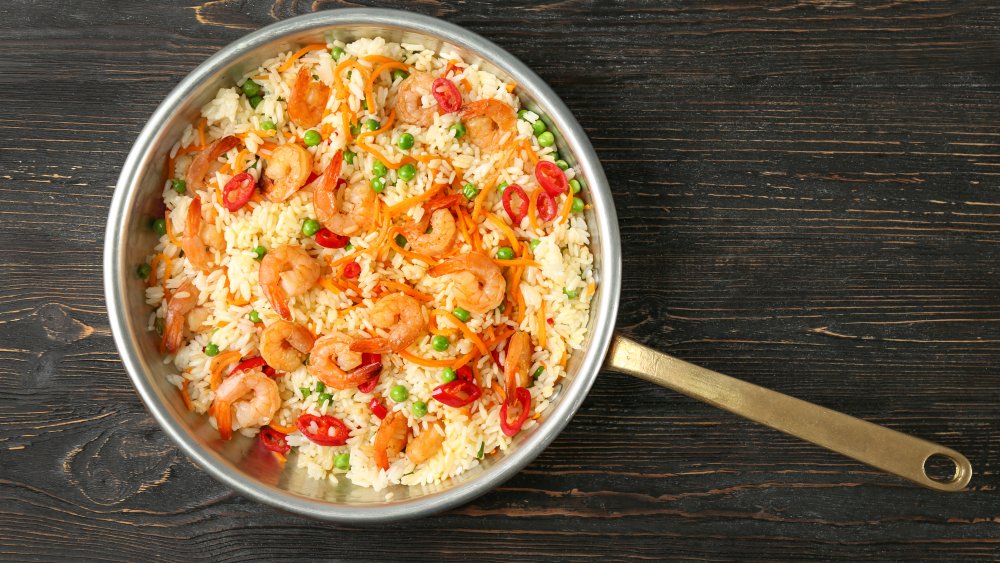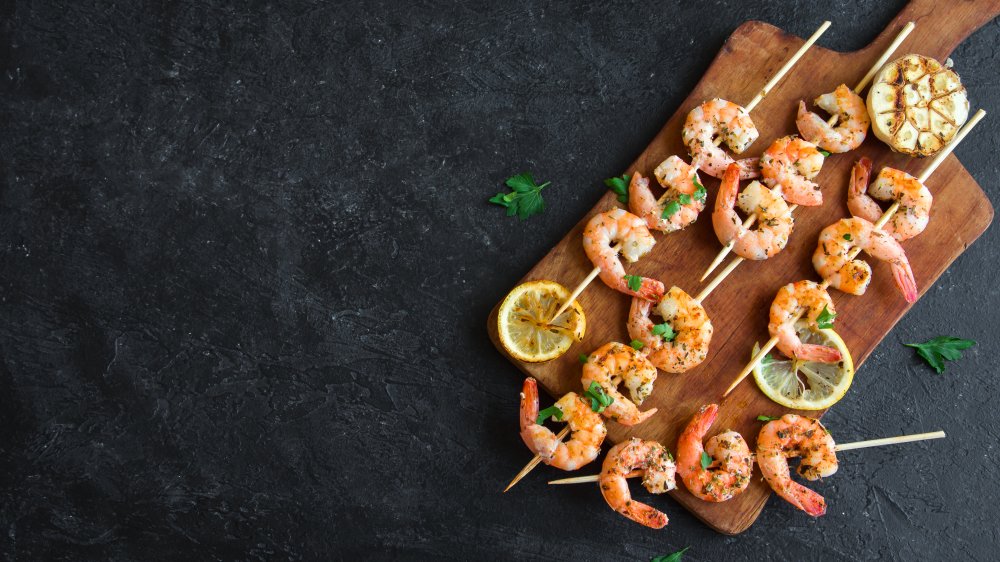This Is Why Your Shrimp Is Always Rubbery
Nobody wants to deal with sad shrimp — it's there to add texture, flavor, and lovely color to your pasta, your stir fry, or your salad. Or, in the case of Southern chefs Edna Lewis and Scott Peacock, the shrimp can be broken down into a buttery, lemony paste, meant to be drizzled over pillowy grits (via Food 52). The possibilities are endless. But first comes the subtle art of avoiding rubbery shrimp.
Rubbery shrimp is the sad, shameful result of a shrimp that's been cooked too long. It doesn't retain that delicate snap that you would get from biting into a succulent, perfectly cooked crustacean. Shrimp, unlike a sturdier salmon or squid, cooks in just a few minutes, so a lack of attentiveness can change everything. The key to retaining that juicy, plump consistency is to cook the shrimp just enough without crossing the line into rubbery territory (via HuffPost).
How do you know when you're approaching that line, though?
How to avoid rubbery shrimp
Once shrimp curls into a gentle "C" shape and has transformed from gray to pink, it's ready to be pulled away from the heat. It's truly not too complicated — the tricky part is watching for that precise moment and acting upon it, like draining your pasta once it's hit that perfect al dente level of tenderness (via Southern Living). If the shrimp have curled tightly, you've gone too far. If the C looks more like an O, then you've crossed the threshold into "overcooked" (via Taste of Home).
Some cooks suggest watching the thickest part of the shrimp as an indication that the entire crustacean is cooked. We're talking about the end of the shrimp that's opposite to the tail — where the vein used to be. According to Bon Appetit, it's crucial to keep an eye on that small indentation at the end of the shrimp will allow you to better understand where your shrimp is, and when to pull it away from the heat. If that little opening has turned opaque, then the shrimp is good to go.
Overall, the secret is concentration. There's no mathematical formula that will allow for the perfect texture within an allotted period of time. According to Salt Fat Acid Heat, the game-changing cookbook, author and chef Samin Nosrat observed that "good cooks obeyed sensory cues, rather than timers and thermometers." So be a little bit more like Samin's favorite chefs and pay attention to your shrimp. We promise: the results will be rewarding.

